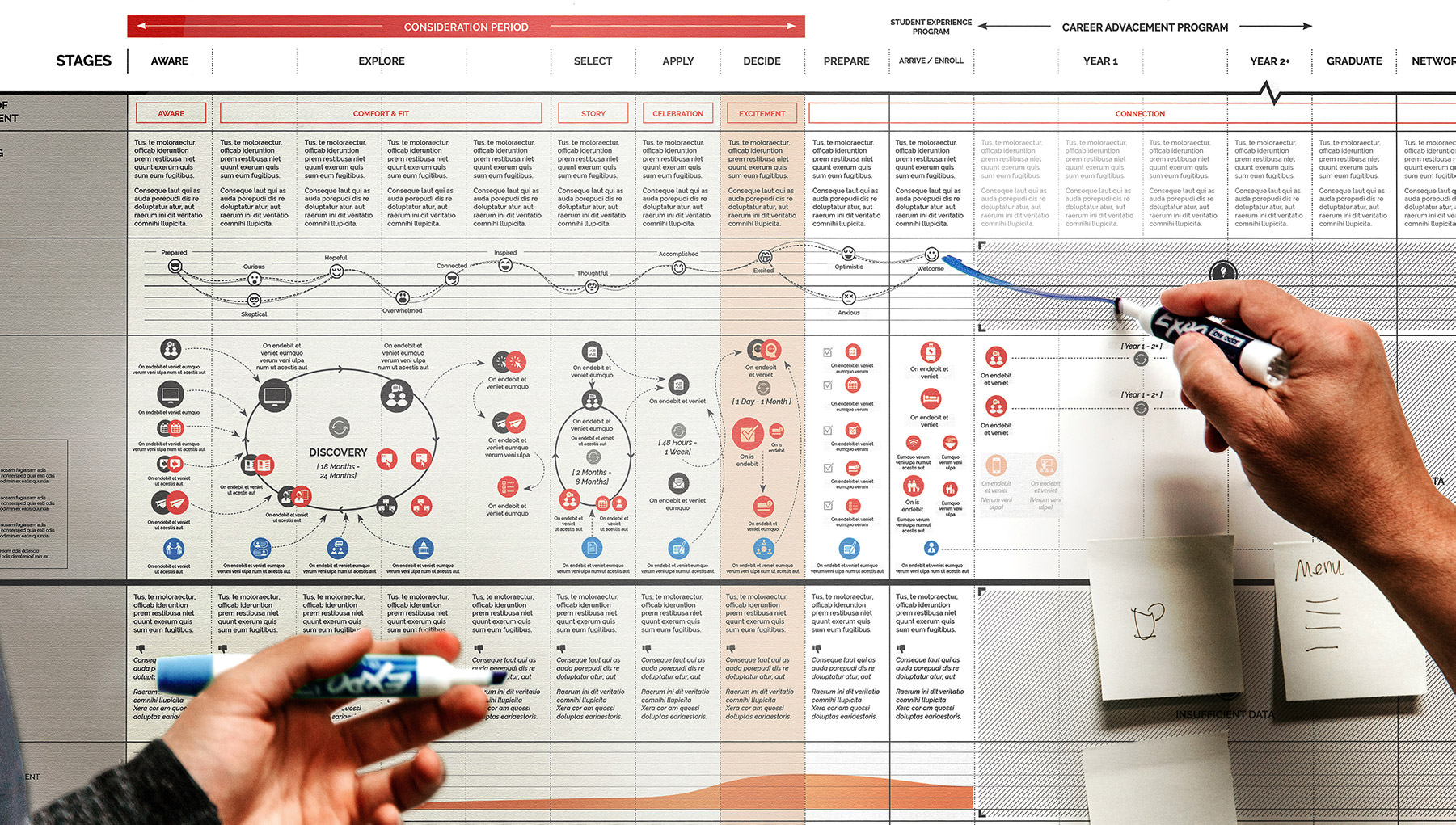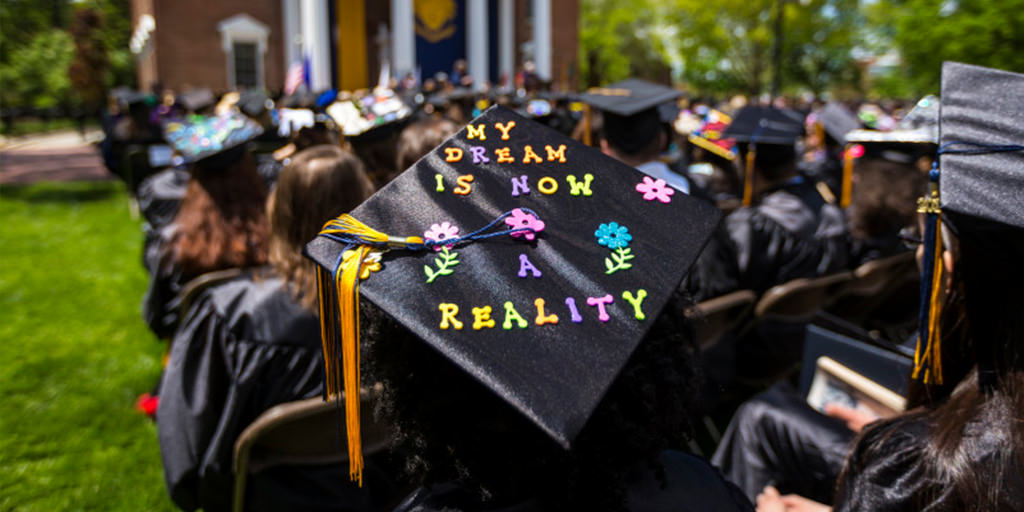Higher education is under increasing social and economic pressure to enact transformational changes. Enrollment is expected to drop precipitously after 2025 due to a “birth dearth” brought on by the 2008 financial crisis. The value of the traditional institution is being called into question as families face unsustainable student loan debt. And the connection between a degree and a good job is under strain.
Institutions need to adapt quickly and comprehensively in order to maintain their value and relevance, and most importantly, to sustain a steady stream of matriculating students. Critical to the survival of today’s higher education institution is the ability to drive engagement and retention: to attract and enroll students, ensure their success, and increase graduation rates. Students — potential, admitted, committed, matriculated and graduated — must be at the center of a clear, unified institutional strategy.
The Student As Customer
Consider these interactions in the student journey: visiting campus, applying for admission and financial aid, registering for classes, seeking career counseling, finding work-study opportunities, securing academic advising, arranging housing and dining, fulfilling credit requirements. How many institutional silos, and how many diverse systems and procedures, do students encounter in the course of “doing business?”
Now, compare those experiences to the customer experiences they have in their everyday lives — with Amazon, Spotify, or Wegmans. Inevitably, every student expects their interactions with the institution to be just as seamless. Like it or not, institutions are competing on student experience, and the value in delivering a good one shows results in the bottom line. In research published in the Harvard Business Review, researchers found that among thousands of customers studied, “Customers who had the best past experiences spend 140% more compared to those who had the poorest past experience.“ So how can institutions align their diverse operations around the student experience?
Student Centricity and Service Design
There is no single solution to student centricity; it requires leadership, time, and careful planning. To create a seamless, consistent, and user-centered approach, the institution must examine not only its relationship to students, but also the experiences of faculty and staff that drive the practices and systems behind the scenes. All stakeholders must be brought into alignment — across multiple touchpoints — before, during, and after the student’s time on campus.
This careful crafting of experiences, the thoughtful consideration of each interaction, defines the practice of Service Design. Service Design accounts for all actors, relationships, environments, tasks and systems to create optimal solutions for all involved. By applying Service Design, institutions can become more student-centric and thus more appealing and profitable.
Student Journey Maps
One of the key tools we use in Service Design for visualization, planning, and innovation is a student journey map. This tool collects and visualizes a student’s entire journey — every major interaction they have with an institution — from their point of view. Built collaboratively with employees, stakeholders, and students, these maps use research to deepen and validate insights.

Some of the things this tool can do include:
- Identifying hand-offs between departments (e.g. enrollment and financial aid). Fixing clunky hand-offs improves the students’ experience and can support retention efforts.
- Noting “pain points,” areas of high anxiety and confusion (e.g. declaring a major). Typically, the institution is not fully aware of the urgency of these periods, and a dysfunctional interaction between systems and people can be identified, and potentially reengineered.
- Highlighting “moments of truth,” experiences that can make or break the relationship the institution is trying to create or sustain with a student (e.g. the time between admissions and enrollment). These are periods of high emotion, where the student perceives value or meaning to exist. Designing for these moments can increase engagement, loyalty, and advocacy.
- Illuminating ways to create new offerings that extend and deepen the relationship a student has with an institution (e.g. using augmented reality to personalize a campus tour). In this way, institutions can identify areas where investment in innovation would have the greatest ROI.
Innovation Opportunities
Embracing Service Design and the tools it can offer is one strategy for higher education institutions to confront the existential challenges they face. Opportunities for innovation abound— around systems, practices, and the paradigms students experience daily — if people from across organizational silos can see how their work connects to the work of others, and how together, it adds up (or fails to add up) to a connected, coherent, and valuable student experience. Keeping the student top-of-mind is the key to sustainability and growth during this transformational moment in higher education.
Have a project? Please get in touch. We’d love to help you solve the student experience challenges facing the higher education industry.




